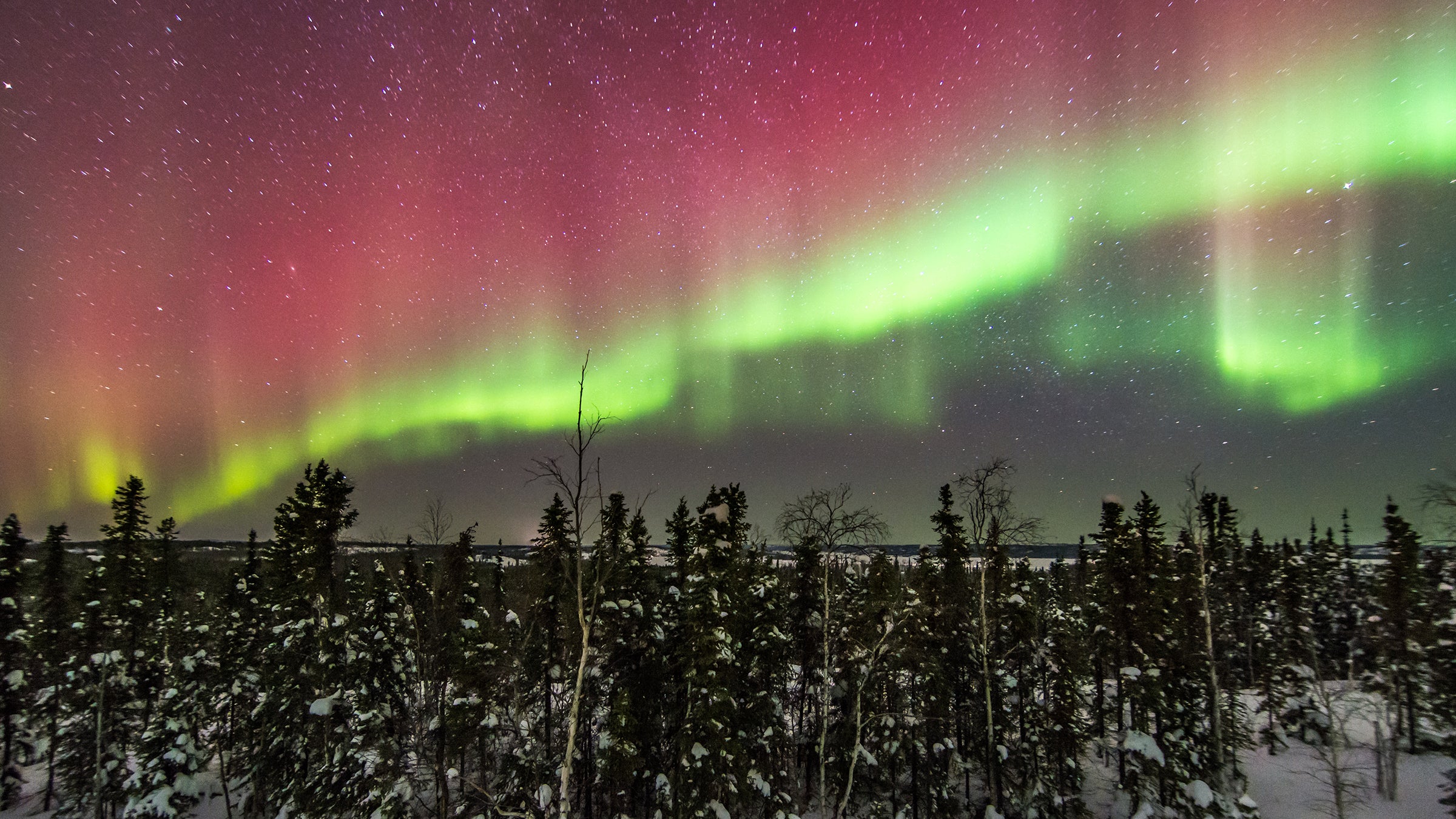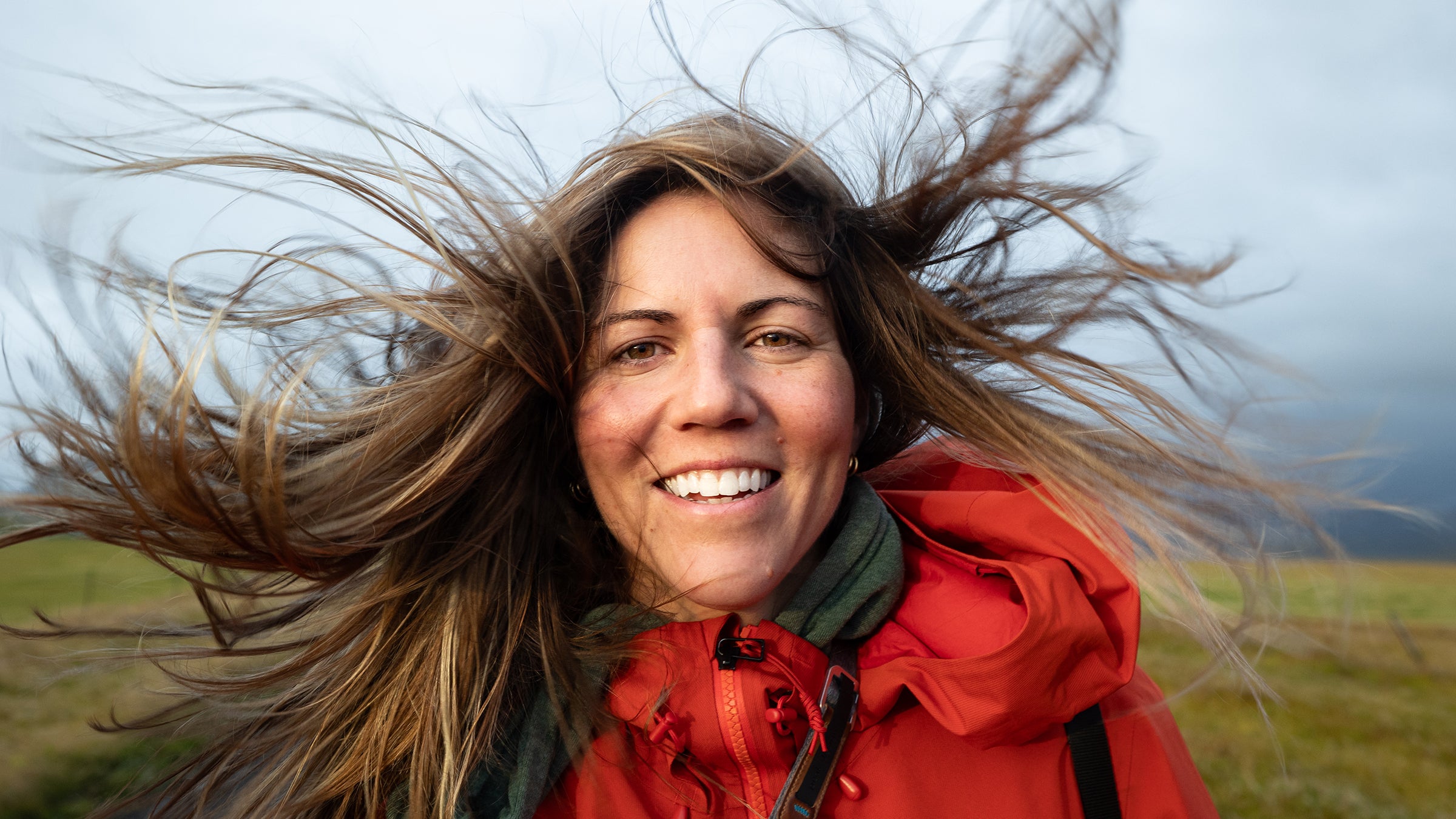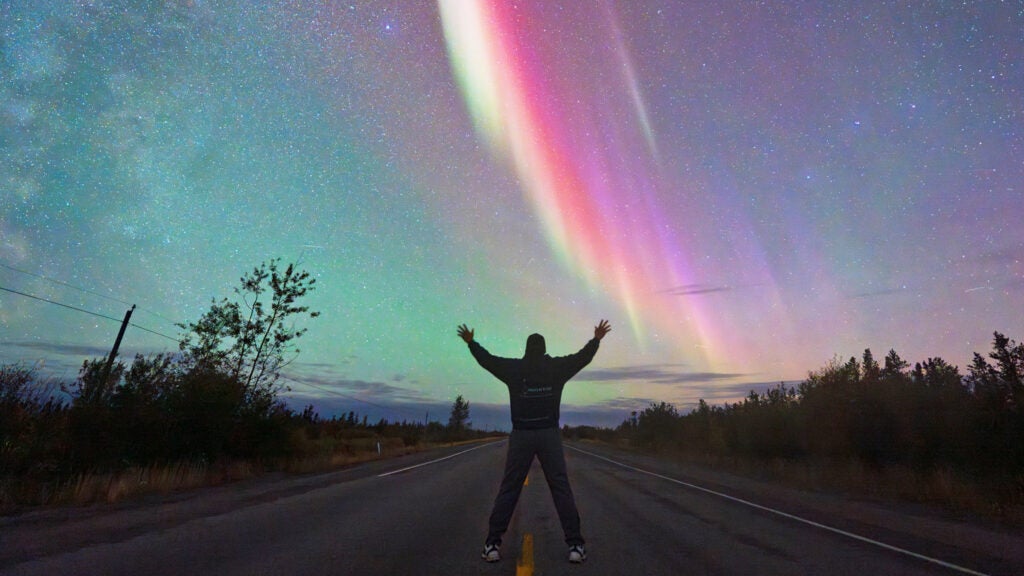Joe Buffalo Child’s Best Tips for Northern-Lights Hunting
Most of us didn’t grow up under the northern lights or in a location where they are prevalent, but aurora activity has spiked in the lower 48 this year, and more opportunities to see them are on the horizon. This is a result of the solar maximum, a roughly 11-year peak in activity that’s now underway and expected to last through at least mid-2025.
I asked Buffalo Child how to successfully catch the show. Read on for his expert advice.
Head to Dark-Sky Destinations at High Latitudes
During the solar maximum, your odds of catching the spectacle in lower latitudes like Michigan’s Upper Peninsula are improved, but you still need relatively strong storm activity to see them. In high-latitude locales like Yellowknife, or Fairbanks, Alaska, the northern lights should be active most nights. “In 2022, we saw auroras every night for six weeks,” says Buffalo Child.
When deciding between destinations, take weather into consideration. For example, Yellowknife is inland and tends to experience less cloud cover than Iceland—also favored by lights hunters—which has a moodier coastal climate.
Not sure where to head? I recently wrote about the best places to see the northern lights around the world, including the places that were most successful for me.
Use the Right Data
Pull up an aurora-chasing app and you’ll inevitably see a Kp rating, which predicts geomagnetic activity on a zero to nine scale (the higher, the better). According to Buffalo Child, “Kp doesn’t matter.” It’s rarely an accurate real-time measure of whether you’ll actually see the lights, especially at high latitudes, he told me.
Instead, Buffalo Child suggests downloading the SpaceWeatherLive app to track the speed and density of the solar wind, which carries charged particles from the sun to earth; as speed and density increase, the likelihood of a prominent display does too.
Buffalo Child also suggests learning to read cloud forecasts to understand timing and movement of the clouds; my go-to app for this is Windy.
Visit a Northern-Lights Destination in the Right Season

At high latitudes, you can’t see the northern lights during the summer, due to the midnight sun. Buffalo Child says that Yellowknife usually has minimal cloud cover in September, August, March, and April—in that order.
In general, the best seasons for viewing the northern lights are fall through winter, usually September through late March. But reach out to a local tourism bureau for the most accurate information for that area.
Tour with a Local Company
That said, it’s always better to tap a local expert—especially someone like Buffalo Child who can predict cloud movements without technology.
“Connect, engage, and consult with a local—ideally an Indigenous company,” Buffalo Child says. There are countless reasons, but here are three big ones: local guides are well-versed in the roadways, in wildlife risks, and in regional weather patterns.
Plus, supporting Indigenous guides helps people like Buffalo Child keep valuable traditions alive. “With residential schools, we lost a lot of our skills, and we need to try to get those back,” he says. Tourism is an important avenue. “This is our land,” he told me, “and through tourism, I show people that we can be ourselves and make a living.”
North Star Adventures’ general aurora-hunting tours with a local Indigenous guide and large groups start at $107. Buffalo Child, however, only leads small group tours, which start at $143. If you’re looking for a multi-night adventure, book a fall package (from $633) for three nights of guided aurora hunting, plus a sightseeing tour of Yellowknife and Indigenous storytelling at the Prince of Wales Northern Heritage Centre. Accommodations are not included. I like the centrally located Explorer Hotel Yellowknife (from $256 at Booking.com).

Adventure and astrotourism writer Stephanie Vermillion has chased the lights around the world for years, from waterfalls in Iceland to remote sheep farms in Greenland. Her book 100 Nights of a Lifetime: The World’s Ultimate Adventures After Dark is out December 3.
Looking for more great travel intel? Sign up for Outside’s Destinations newsletter. Or for more inspirational features like these, sign up for the Long Reads newsletter.

